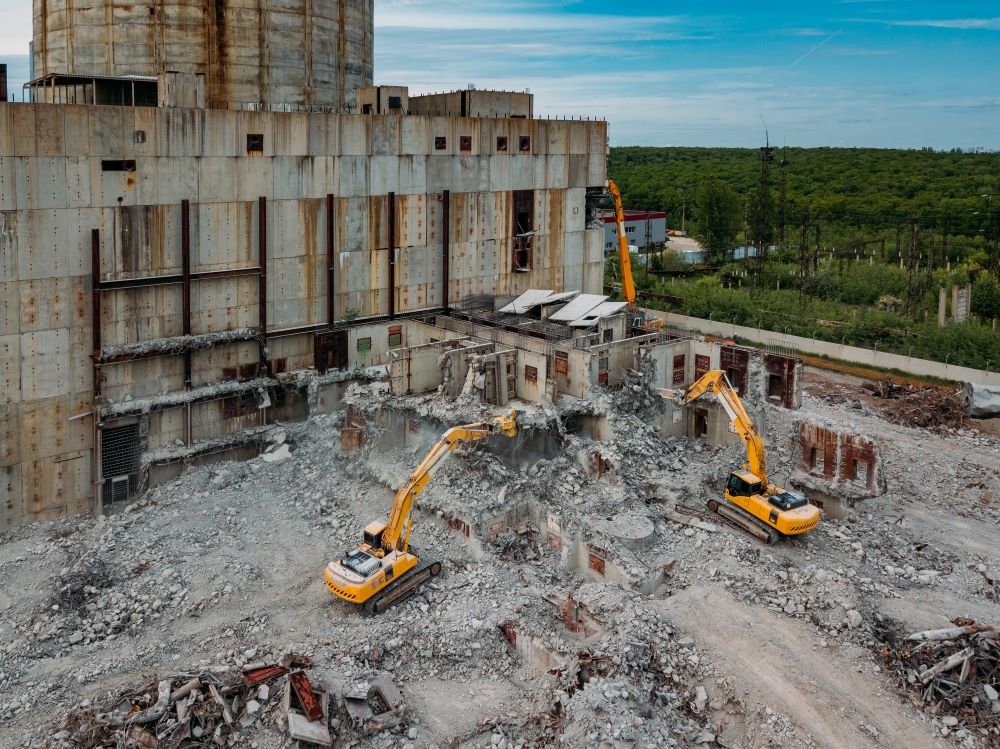
Industrial Demolition Services for Old Factories
Old factories often become outdated when industrial landscapes change, causing safety risks and taking up valuable area that might be used for more contemporary development. In order to securely demolish these antiquated buildings while maintaining adherence to environmental laws and safeguarding the nearby populations, industrial demolition services are essential. Professional demolition crews offer the knowledge, tools, and planning required for an effective and responsible takedown, whether the objective is to eliminate decaying facilities or clear ground for future building.
In contrast to straightforward building demolition, industrial operations are more difficult and need a greater degree of technical competence since they often include dangerous chemicals, sophisticated technology, and reinforced structures. Before implementing a customized demolition plan, skilled demolition experts evaluate every element of the site, including environmental considerations and structural stability. In addition to ensuring worker and local resident safety, this also guarantees adherence to local regulations and sustainable practices like recycling recyclable materials.
OUR SERVICES
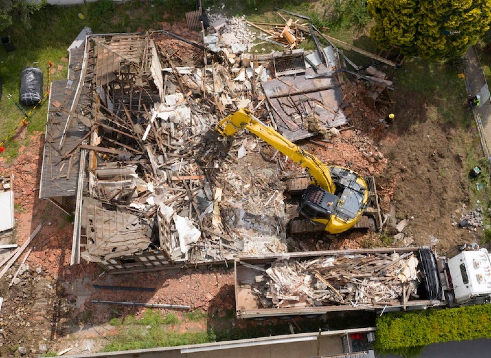
Structure Demolition. Residential, Commercial & Industrial
If your structure poses a health, safety, or environmental risk, demolition can prevent costly citations or fatal accidents. While this may seem daunting, you are just a phone call away from having your residential demolition done professionally, responsibly, and at a great price.
Talk to a Demolition Specialist Now! 916.249.5001
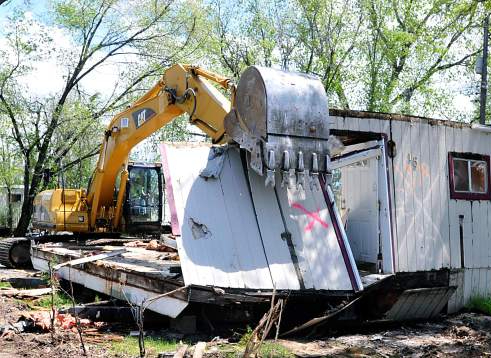
Mobile Home Demolition
We demolish and haul away mobile homes. Any size, anywhere, anyhow. We are fast, clean and competitive. We serve most of Northern California. There are many factors to consider when removing or demolishing your old trailer, mobile home, or manufactured home like: the processes involved, costs, time, contractors, debris, and permits.
Talk to a Demolition Specialist Now! 916.249.5001
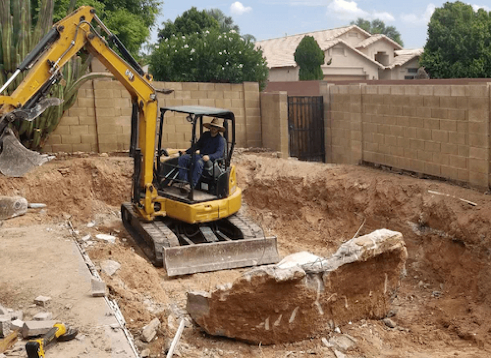
Pool Demolition
When removing a pool in Sacramento, California with the professional demolition team of Maxton Demo, you’re guaranteed peace of mind from beginning to end. From your initial request for an estimate to clean-up, you can expect our pool demolition process that’s completely professional and safe.
Talk to a Demolition Specialist Now! 916.249.5001
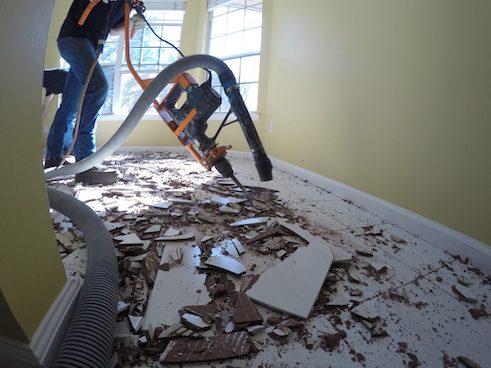
Floor Demolition
Flooring demolition, like any other major home renovation work, requires a specific set of skills and tools to be performed properly. You need experts in flooring demolition to get you the best floors possible. Contact us to find out more about how we can help you today.
Talk to a Demolition Specialist Now! 916.249.5001
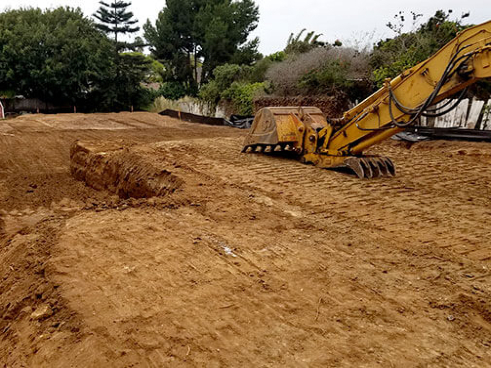
Grading & Excavating
If you need an experienced excavator and grader in Sacramento, call us today. One of the many reasons that residential, commercial, and industrial customers choose to work with us is because we’re able to provide a broad range of services to help construction-related projects get done in less time and at a reduced cost.
Talk to a Demolition Specialist Now! 916.249.5001

Roof Snow Removal
Heavy snow & ice dams can cause significant roof and home damage. Roof Snow removal is our specialty during the winter months. Serving the Sacramento, California area for 10 years, we can get your roof snow removed and promise a quick response and reasonable rates.
Talk to a Demolition Specialist Now! 916.249.5001
Knowing About Industrial Demolition
The methodical destruction of historic manufacturing buildings is a part of the intricate and multidimensional process of industrial demolition. To guarantee a safe and efficient operation, a deep comprehension of engineering concepts, construction materials, and the structural integrity of the structures is necessary. The magnitude and complexity of industrial demolition, which often involves enormous buildings constructed with steel, reinforced concrete, and other sturdy materials, set it apart from ordinary residential demolitions. Because the procedure may include the removal of hazardous chemicals and the management of any environmental effects, it requires certain tools and knowledge.
Clearing the property for future use—whether it is redevelopment, repurposing, or restoring the land to its natural state—is the main objective of industrial demolition. This calls for a calculated strategy that starts with a thorough evaluation of the location and its environs. Together, engineers and demolition specialists develop a thorough strategy that takes into account the building’s design, any hazardous chemicals present, and any possible effects on the surrounding communities and environment. This first stage is essential because it establishes the foundation for a successful and efficient demolition procedure.
The act of physically demolishing buildings is simply one aspect of industrial demolition. It also entails careful preparation and compliance with legal and regulatory mandates. Experts in demolition must comply with several laws pertaining to waste management, environmental preservation, and health and safety. To guarantee compliance, this calls for a thorough awareness of local legislation as well as the capacity to collaborate closely with regulatory agencies. The intricacy of these specifications emphasizes the need for expert demolition services capable of managing each step of the procedure with care and accuracy.
The Value of Dismantling Antiquated Factories
Old factories, which are often remnants of earlier industrial periods, may provide serious problems for environmental management and urban growth. These antiquated buildings may become obstacles to advancement when industries transition to more contemporary processes. They contribute to the economic and visual revival of cities by taking up precious real estate that would be better used for new commercial spaces, industrial facilities, or green areas. In order to free up resources and space for new productive applications, it is imperative that these outdated industries be demolished.
Additionally, the population is in danger of health problems due to the presence of hazardous materials like asbestos, lead, and other harmful compounds in many old industries. Residents and employees in the vicinity may have major health problems as a result of these materials’ gradual degradation and potential for airborne contamination. By safely removing and disposing of these dangerous materials, the demolition of these facilities lowers the possibility of environmental contamination and guarantees the safety of the local populace.
From an economic standpoint, the destruction of outdated enterprises may promote expansion and progress. Cities and towns may draw in new companies and industries by clearing these areas, which will strengthen their local economies and provide employment. Developers and investors looking to take advantage of the possibilities for new developments may be attracted by the availability of premium real estate in key areas. This change from dilapidated buildings to thriving commercial centers serves as an example of how important industrial demolition is to urban rehabilitation and economic growth.
Industrial Demolition Service Types
A broad variety of tasks catered to a project’s particular requirements are included in industrial demolition services. Mechanical demolition, which uses large equipment like excavators, bulldozers, and wrecking balls, is one of the most popular techniques. Large constructions may be quickly and effectively disassembled with this method, which enables a site to be cleared quickly. For steel and concrete industries, where force and accuracy are needed to handle the heavy materials, mechanical demolition is often the preferred technique.
Deconstruction is a different kind of demolition service that focuses on carefully disassembling buildings in order to recover useful elements. This approach is especially advantageous for projects that prioritize waste reduction and sustainability. Demolition crews may reduce waste and offer useful resources for the next building projects by carefully removing and classifying things like steel beams, bricks, and lumber. Although deconstruction is more labor-intensive and sometimes takes longer than mechanical destruction, it has major advantages for the environment.
A specialized demolition method called implosion is employed to carefully bring down massive buildings, usually in confined metropolitan areas. This technique minimizes the effect on other buildings by carefully placing explosives to induce a building to fall inward. Because implosion requires meticulous planning and coordination to guarantee operating safety, it demands a great degree of skill and accuracy. Implosion is a potent technique for destroying large industrial structures in densely populated regions, although it is less popular than other approaches.
Guidelines for Safety in Industrial Demolition
Because demolishing huge buildings has inherent dangers, safety is crucial in industrial demolition. Strict safety regulations must be followed by demolition crews in order to safeguard the environment, the public, and employees. In order to detect possible dangers, including structural instability, toxic chemicals, and closeness to other buildings or infrastructure, thorough risk assessments are the first step in this process. To reduce identified hazards and guarantee a safe working environment, comprehensive safety plans are created based on these evaluations.
In demolition activities, personal protective equipment (PPE) is an essential part of safety procedures. To protect themselves from falling dust, debris, and dangerous materials, workers must wear steel-toed boots, gloves, safety goggles, hard helmets, and respiratory protection. In addition to personal protective equipment (PPE), safety precautions include the installation of safety barriers to retain debris and the creation of exclusion zones to keep unauthorized persons away from the demolition site. To keep employees aware and ready for any risks, regular safety briefings and training sessions are held.
Another crucial component of demolition safety procedures is emergency readiness. Clear emergency response plans that specify how to handle mishaps, injuries, or unforeseen circumstances are essential for demolition operations. This includes keeping first aid supplies on hand, making sure that lines of communication are open, and preserving the capacity to respond quickly to crises. Demolition crews may reduce hazards and safeguard all parties involved in the operation by putting safety and readiness first.
Environmental Factors in the Demolition Process
Given the potential for major environmental effects, environmental responsibility is a crucial factor in industrial demolition. By using meticulous planning and execution, effective demolition techniques seek to reduce these effects. In order to find possible problems, including soil pollution, air quality issues, and the presence of hazardous items, this often entails doing environmental assessments. The creation of plans to reduce environmental hazards and guarantee adherence to environmental laws is guided by these evaluations.
An essential component of ecologically conscious demolition is waste management. To cut down on the quantity of demolition waste dumped in landfills, it is intended to be reduced, reused, and recycled. This is accomplished by using techniques including on-site waste sorting, concrete and metal recycling, and the secure disposal of hazardous materials. Demolition projects may greatly lessen their environmental impact and support sustainable development objectives by putting these strategies into effect.
Other environmental factors that need to be taken into account during demolition operations include noise and air pollution. While noise barriers and restricted working hours assist in minimizing disruptions to neighboring populations, dust suppression methods, such as water spraying, are utilized to lower airborne particulates. Demolition crews may strike a balance between the necessity for growth and the need to maintain and protect the environment by proactively addressing these environmental issues.
The Demolition Procedure: Detailed
The demolition process is a well-planned series of actions intended to guarantee efficiency, safety, and adherence to all applicable laws. It starts with a comprehensive site survey, during which engineers and demolition specialists determine the building’s structural soundness, locate potentially dangerous items, and analyze environmental hazards. Using this data, a thorough demolition plan that specifies the project’s procedures and schedule is created.
The location is ready for destruction when planning is finished. In order to do this, the location must be secured, safety barriers must be erected, and all required permissions and clearances must be obtained. Hazardous chemicals are removed carefully, and utilities like gas, electricity, and water are turned off. After that, the demolition crew gathers tools and supplies to start the actual disassembly of the building.
Depending on the approach used, the actual demolition process might vary somewhat, although it usually entails the methodical dismantling of structural components from the top down. Debris is meticulously handled and separated for disposal or recycling throughout the process. The site is cleaned of debris, and any required cleanup work is carried out to make it ready for future usage when the construction has been fully disassembled. To guarantee that the project is finished safely and effectively, every stage of the demolition process is carefully planned and carried out.
Selecting the Best Demolition Service Provider
For an industrial demolition project to be successful, choosing the correct demolition contractor is essential. To manage the unique difficulties of the project, the contractor must have the requisite knowledge, resources, and experience. This starts with a careful assessment of possible contractors, taking into account elements including their credentials, industry reputation, and history of working on related projects. A trustworthy contractor should be able to provide references and exhibit a dedication to environmental responsibility, safety, and quality.
When selecting a demolition contractor, experience is crucial. An expert contractor will be able to foresee and handle any obstacles that may arise since they will have a thorough grasp of the complexity involved in industrial demolition. Additionally, they will already have connections with regulatory bodies, which will make it easier to navigate the requirements for compliance and permits. Throughout the project, this expertise results in increased efficiency and reduced risks.
Another crucial trait to search for in a demolition contractor is communication and openness. Throughout the project, the contractor should keep lines of communication open and provide frequent updates, all while being transparent about their procedures, budgets, and schedules. All parties involved are guaranteed to be aware and in agreement thanks to this openness, which also helps to foster trust. Project owners may be sure that their demolition project will be carried out safely and successfully by selecting the correct contractor.
Industrial Demolition Cost Factors
Given the vast variety of variables that might affect industrial demolition costs, project owners must be aware of the aspects that affect price. The size and complexity of the building being destroyed are two of the main factors influencing the cost. Costs are greater for larger and more complicated structures since they need more time, money, and skill. Due to the need for specialist handling and disposal, the presence of hazardous materials or difficult site circumstances may also result in higher costs.
The demolition technique used has a major impact on the cost of demolition as well. Although mechanical demolition is often simpler and quicker, it might be less costly than labor-intensive and time-consuming techniques like deconstruction. However, via material salvaging and lower landfill costs, deconstruction may result in long-term savings. Although implosion works well for certain projects, it comes with extra expenses for preparation, security, and explosives.
The whole cost of demolition also includes permits and regulatory compliance. It might take a lot of time and money to get the required permissions and make sure that safety and environmental laws are followed. When planning a demolition budget, project owners should account for these expenditures and collaborate closely with their contractor to fully comprehend the range of costs. Owners may efficiently manage their demolition budget and make well-informed selections by being aware of these cost variables.
Final Takeaways: Industrial Spaces’ Prospects Following Demolition
A new age of industrial spaces, where innovation and sustainability drive progress, is ushered in by the dismantling of ancient enterprises. The conversion of old buildings into contemporary facilities or green areas has many chances for development and rejuvenation as industries continue to change. Economic prosperity, better community infrastructure, and greater environmental quality may result from the effective destruction and rebuilding of industrial sites.
Looking forward, technological developments and a greater focus on sustainability will influence industrial spaces in the future. Demolition techniques will keep changing to include new materials and techniques that improve efficiency and lessen their negative effects on the environment. Data-driven and automated smart demolition methods will further optimize processes and enhance safety results. These developments will guarantee that industrial demolition continues to be an essential instrument for environmental stewardship and urban development.
In the end, industrial demolition serves purposes beyond just removing aging buildings. It acts as a catalyst for transformation, making it possible to design areas that represent the ideals and requirements of contemporary society. Communities may open up new avenues for development and change by accepting the potential of deconstruction to spur advancement, transforming the difficulties of the past into chances for a better future.
Do you have a Question?
Talk to a Demolition Specialist Now! 916.249.5001
Request Formal Quote